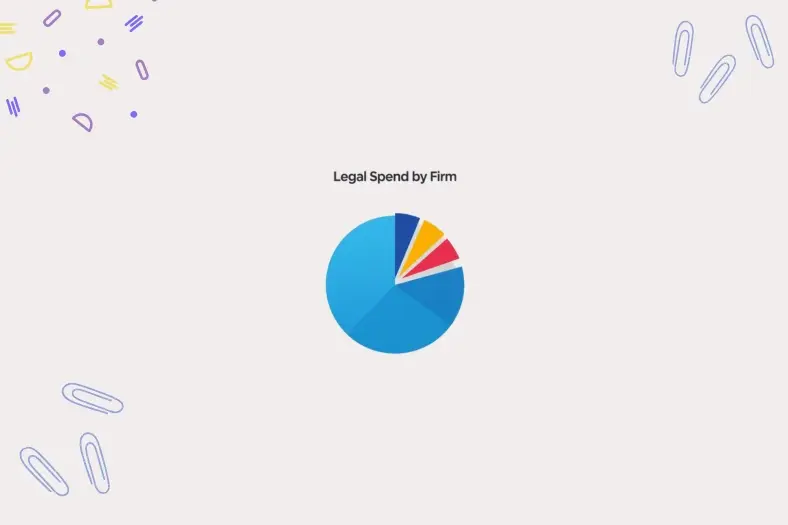
External Counsel Management Using Data to Cut Legal Spend
External counsel management (ECM) is not merely a back-office function; it's quickly becoming a legal department's strategic edge.
Cost control is the number one priority area, with 76% of teams identifying outside counsel spend management as a top objective, while spend management technology is quickly gaining traction.
Source: Thomson Reuters Legal
So how do the legal leaders of today convert this challenge into a strength?
It starts by embracing proactive, data-driven external counsel management.
External Counsel Management: Leveraging Data to Drive a Competitive Advantage
 Proactive, data-driven external counsel management is quickly becoming a competitive edge.
Proactive, data-driven external counsel management is quickly becoming a competitive edge.
By employing analytics, technology, and more intelligent decision-making frameworks, legal departments can alter their dynamics with law firms.
Let's take this step-by-step on how to make this transition.
Key Takeaways
- External counsel management (ECM) is more than invoice review; it's about driving greater value and more collaborative partnerships.
- Increasing volumes of matters and stagnant budgets mandate a move from ad-hoc management to disciplined, data-centric management.
- New ECM technology offers dashboards, spend analysis, and AI-driven insights to identify risk and optimize law firm selection.
- Transitioning to active management provides legal teams with better visibility, stronger control of compliance, and better decision-making.
Building a Robust Data Platform for OCM
External counsel management (ECM) is data-driven.
Establishing a robust intelligence platform is the path toward changing the way legal teams interact with outside counsel, define performance, and justify spend to business stakeholders.
The platform is generally anchored on three pillars:
Matter Data
Each engagement is begun by comprehending the scope of work.
Recording minute matter-level information like type, jurisdiction, complexity, timelines, and outcome develops a record that not just informs current oversight but also future engagements.
In the long run, this enables legal departments to identify trends, distribute work more strategically, and determine which firms provide the most value in a given practice area.
Financial Data
By continuously monitoring billing rates, staffing models, discounts, and actual vs. estimated costs, legal departments get a clear picture of where budgets are steady, and where leaks may be occurring.
Having a baseline of clean financial information facilitates better negotiating, better panel management, and better forecasting.
Performance Data
Although costs are significant, value is not necessarily lowest fee.
Performance metrics like responsiveness, compliance with billing rules, product quality, and client satisfaction are just as valuable.
Getting both quantitative and qualitative feedback creates a balanced understanding of law firm performance.
In the long term, it informs objective assessment and reinforces accountability throughout engagements.
Individually, each of these three columns converts ECM from administrative control into quantifiable, strategic activity.
Together, they turn ECM into an instrument for strategic decision-making.
Technology in External Counsel Management
 Solid data pillars are needed, but data in itself won't tip the scales.
Solid data pillars are needed, but data in itself won't tip the scales.
To actually realize value in external counsel management, legal teams require the proper technology engine, a platform that doesn't simply record information but actually converts it into valuable insights.
Centralized Platforms
Email threads and spreadsheets are no longer sufficient to handle sophisticated interactions with outside counsel.
Centralized platforms bring matter, financial, and performance data together into one convenient location.
A single source of truth obliterates silos, diminishes errors, and provides stakeholders throughout the enterprise consistent visibility into work in progress and spend.
Automation and AI
Manual procedures hamper legal teams' work and raise the specter of missteps.
With technology automating mundane tasks like invoice verification, compliance checking, or matter intake, administrative burdens are reduced, and attorneys are liberated to concentrate on more value-intensive work.
Augmenting the system with AI provides an additional layer: predictive analytics can identify anomalies in billing practices, recommend best-fit staffing models, or predict budget overruns before they occur.
Integration with Business Tools
ECM is not a standalone system. It can be effective only if it gets integrated with business systems such as ERP, CRM, and document management systems.
Smooth integration ensures legal content aligns with overall organizational processes, relating contract results to company KPIs or synchronizing financial information with company budgeting systems.
Analytics and Reporting
The last part is transforming raw data into meaningful insight.
It takes sophisticated dashboards and reporting software for legal leaders to monitor KPIs in real time, whether it matter cycle time, outside counsel spend, or firm performance scores.
With transparent, visualized metrics, decision-making happens at a faster pace, becomes transparent, and is easier to explain to executive leadership.
Data as the Foundation of Stronger Counsel Panels
 For most legal departments, panel management of external counsel is a back-office task, like renew contracts, pay invoices, maintain the list, and repeat.
For most legal departments, panel management of external counsel is a back-office task, like renew contracts, pay invoices, maintain the list, and repeat.
But visionary organizations know panel management is more than just keeping track of a list; it's about building an ever-changing, dynamic system where information fuels smarter interaction, responsibility, and sustainable value.
From Static Lists to Living Systems
Legacy panels tend to be handled as fixed rosters of approved law firms.
The difficulty is that this does not leave much space for performance measurement or aligning legal expenditures with business objectives.
As opposed to this, a data-driven panel exists as a dynamic system that is constantly changing in response to quantifiable results like responsiveness, cost effectiveness, or skill in individualized niches.
Performance Metrics at the Core
Proactive panel management is based on transparent, consistent metrics.
Rather than anecdotal gut feelings or relationship-driven decisions, the firms are measured on hard facts: turnaround times, outcome of matters, accuracy of billing, and compliance standards.
Dashboards and scorecards give an at-a-glance indication of which firms are performing well and where there's a need to recalibrate.
That objectivity leads to fairer assessments and compels external counsel to raise their game all the time.
Strategic Partnering Over Transactional Work
An information-driven panel is not about limiting options, it's about forming deeper relationships with the right firms.
When there are clear performance standards, organizations can see which firms are bringing the highest value and direct more work to them.
This builds tighter, more strategic ties, minimizing the inefficiencies of continuously bringing new firms on board while guaranteeing that legal work is consistent with corporate objectives.
Continuous Improvement Through Feedback Loops
Proactivity also implies embedding feedback into the system.
Periodic reviews, along with analytics, help ensure that panel composition is aligned with the changing needs of an organization.
When a new regulatory issue arises or a business unit enters new markets, the panel can be realigned accordingly, supported by facts rather than guesswork.
Benchmarking to Co-Create Value with External Counsel
 Benchmarking is more than an exercise in measurement; it's a compass to guide ongoing improvement and a catalyst for fostering greater collaboration among organizations and their outside counsel.
Benchmarking is more than an exercise in measurement; it's a compass to guide ongoing improvement and a catalyst for fostering greater collaboration among organizations and their outside counsel.
Making Data Meaningful Comparisons
Classic benchmarking tends to center on comparing hourly rates between firms.
This is significant, but it does not see the larger picture. A newer mindset considers a combination of cost, quality, and results.
How does one firm's turnaround time for high-stakes litigation compared to peers?
Which firm reliably provides compliance counsel that avoids downstream risk?
These are the comparisons that make benchmarking an analytical decision-making tool rather than a reporting exercise.
Driving Transparency and Accountability
With organized benchmarking, discussions with outside counsel turn from anecdotal impressions to fact-based conversations.
Performance dashboards call out unmistakable trend, be it budgetary compliance, diversity representation, or innovation in the delivery of legal services.
Counsel can look up and down their peer group, and organizations can find areas where they're meeting expectations, or short.
From Cost Savings to Value Co-Creation
Benchmarking isn't just about reducing rates alone.
Done correctly, it marks where counsel adds distinctive value, be it in niche knowledge, risk reduction, or strategic guidance.
The legal teams can then focus on partnerships that not only contain costs but also co-create value for the business.
A firm that reliably provides practical, business-focused advice, for instance, may be worth paying more for since downstream savings exceed the initial cost.
Embedding Continuous Improvement
The true strength of benchmarking is in its continuous loop.
Ongoing reviews guarantee that best practices learned in one round will shape the next.
Companies get a window into improvement, and organizations build their skills for strategic direction of work.
A culture of excellence builds over time with this feedback loop, where both parties are driven to set higher standards.
Your Data, Your Strategic Compass
External counsel management is no longer just about tracking invoices or monitoring engagement, it’s about unlocking intelligence from every data point.
When organizations harness insights across cost, performance, outcomes, and compliance, they gain a compass to navigate increasingly complex legal and business landscapes.
Data becomes the bridge between accountability and value, helping legal teams elevate conversations with external counsel from transactional oversight to strategic collaboration.
This is where technology ecosystems come into play.
Based on Microsoft 365, Dock 365 takes familiar productivity tools and turns them into a potent base for external counsel management.
Rather than dealing with disparate spreadsheets and manual reports, teams can bring data together, automate processes, and bring forward actionable insights, all in a platform they already use.
Legal teams with the appropriate information and tools can benchmark efficiently, control panels ahead of time, and collaborate to create value with outside counsel, becoming strategic business enablers.
As the pressure on in-house legal operations continues to grow, the question is no longer whether to implement data-driven external counsel management, but how fast.
With Dock 365, the future is obvious. Book your free demo today and see the difference that a connected, Microsoft 365-backed platform can bring.
📑 Also read: General Counsels: Take Control of Contracts, Drive Business Value
Like our content? Subscribe to our newsletter on LinkedIn for more insights and updates.
Book a Live demo
Schedule a live demo of Dock 365's Contract Management Software instantly.

Written by Jithin Prem


